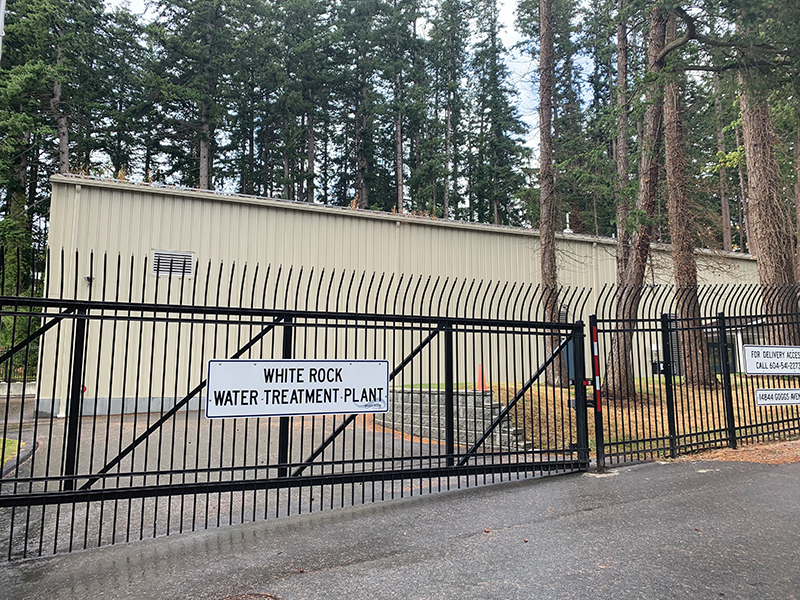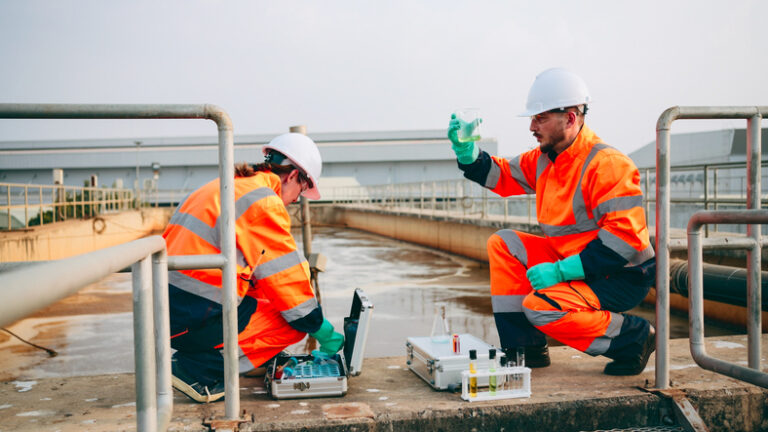Everyone is dependent on clean, safe drinking water and fully operational wastewater treatment facilities.
To guarantee this, Public Safety Canada deemed you essential workers: “Employees and others needed to operate and maintain drinking water and wastewater/drainage infrastructure.”
However, many of you are working remotely because protecting utility employee health is vital for continuing operations and making sure that main breaks, sewer line clogs and flooding doesn’t occur or can be quickly rectified.
With fewer workers onsite how can you ensure your plants don’t experience unanticipated downtime? Let’s explore the issues and solutions that can help you navigate these challenges.
Water Infrastructure
Even before the pandemic you faced many challenges because investments in water utilities, which include supply systems for distributing drinking water as well as wastewater and sewage treatment systems, have not been kept up with need.
For example, the 2016 Canadian Infrastructure Report Card found that 35 per cent of Canada’s wastewater infrastructure and 29 per cent of drinking water infrastructure is in fair to very poor condition.
In cities across Canada and around the world, water infrastructure is aging rapidly and encountering failures with increasing frequency. This is challenging under “normal” circumstances but becomes mission critical during a pandemic.
A new report released by the Forum for Leadership on Water (FLOW) urges the Canadian government to make innovative and sustainable urban water infrastructure a top priority for its 10-year, $180 billion infrastructure plan.
FLOW proposed that the federal government’s investment in water infrastructure be used to scale up sustainable solutions to urban water management, ensure water infrastructure will be safe and effective in a changing climate, and position Canada as a global innovation leader in the clean water technology and services sector, including programs for optimization and efficiency.
The organization also proposes that the government continue funding programs that help municipalities implement innovative and non-traditional approaches to upgrading and repairing water infrastructure. These include, but are not limited to, hardware and software technologies to support maintenance management and monitoring and automation (‘smart’ systems).
State-of-the-art digital technology helps avoid unanticipated risks. These innovations can drive significant economic and environmental improvements, and ensure continuity in service when staff are working remotely, like during this pandemic.
Remote Monitoring
New infrastructure funding yet hasn’t been approved and when it does, it will take time to update the country’s [infrastructure] systems. In the meantime, the need to reduce costs associated with support maintenance of the aging infrastructure is increasing the adoption of smart water management technology, including remote monitoring.
A recent report by Bluefield Research—Focus Report, Water Industry 4.0: U.S. & Canada Digital Water Market Forecast, 2019-2030—presents an analysis of the U.S. and Canadian digital water market. This report cites that annual capital expenditures for digital water solutions will rise from $5.4 billion in 2019 to $10.8 billion in 2030, setting the stage for more advanced monitoring and management of critical infrastructure.
Under increased and unprecedented pressure to do more with less, and to find new means of paying for infrastructure, water owners and operators recognize that it is essential to understand and optimize the capacity of their assets.
One way they can do this is through the use of remote monitoring and notification software, which allows fewer people to monitor many more assets using devices that people already have, such as smartphones and tablets. Uninterrupted remote availability is essential to ensure that systems can be continuously monitored, even without staff onsite or with very few people working at the facility.
Upgrading your monitoring system might even be funded through Infrastructure Canada’s new Clean Water and Wastewater Fund. In addition to delivering support for provincial, territorial, and municipal water and wastewater priorities, the federal government will fund up to 50 per cent of eligible costs for projects, such as optimization and improved asset management, including studies and pilot projects related to innovative and transformative technologies.
The benefits of utilizing a remote monitoring and notification software system via a mobile app include:
- Streamlines decision making. Push notifications let you quickly see what is wrong, send an acknowledgment, and monitor alarm condition changes in real-time, right from your smartphone.
- Promotes team problem solving. Chat helps your entire team converse, brainstorm, and share solutions on-the-fly, from wherever they are—whether in the plant, at home, or on the road.
- Work more efficiently. Team Visibility shows you who has seen an alarm as well as who has acknowledged it, reducing guesswork and redundant responses.
- Multiple communication channel support. Ensuring resiliency through voice notification and SMS messaging in the event of internet connectivity issues.
Remote monitoring in action
For 40 years, White Rock’s almost 20,000 residents depended on private utility companies that owned and operated the city’s water infrastructure. After realizing more transparency and greater investments were needed, the city acquired the utility in 2015.
Since then, White Rock has taken many steps to improve the water quality, including increasing water storage capacity by 33 per cent, investing nearly $12 million to construct a water quality treatment plant, and completing a health-mandated secondary disinfection throughout the entire distribution system.
Along with the new water treatment facility, the community relies on three reservoirs, four pump stations and four pressure release valves to ensure the water coming into residents’ homes and businesses is safe.
Prior to purchasing and operating the utility in 2015, very little investment was made to infrastructure upgrades. The utility operated on an old SCADA platform utilizing robotic voice remote software that ran on unreliable phone lines. This caused many problems, including providing inaccurate telemetry and overflowing reservoirs.
Remote monitoring upgrade
In 2018, White Rock began implementing a Water Master Plan that coincided with the water quality treatment plant construction. City leaders knew this was the perfect time to upgrade the SCADA platform and integrate a more robust remote monitoring and notification software system. After thorough research, the city selected the GE iFIX Dual SCADA and WIN-911 Interactive as a solution, to push critical plant alarms and event details to remote workers via SMS Text Message.
“We needed a modern software notification system that could dependably monitor the city’s water quality, levels, pump stations, electrical components and flow controls; we didn’t have this with the previous software,” commented Chris Zota, IT manager at the City of White Rock.
Implementing the latest alarm notification platform has provided a centralized and unified system that integrates well with the SCADA platform. Additionally, it improves safety, reduces workers response times and delivers information quickly.
“COVID-19 forced all of our workers offsite from March through June,” Zota added. “Because of the system, we received important notifications via our tablets or smart phones and were able to fix any problems remotely, ensuring emergencies didn’t occur and avoiding any unplanned downtime.”
This article was written by Greg Jackson—the CEO of Austin, TX-based WIN-911—for the September/October 2020 issue of Water Canada.
Header Image Credit: Chris Zota.









